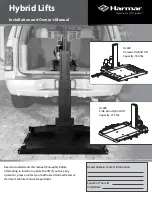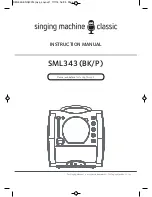
TECNA
S.p.A.
ITEM
TE700 Instruction
Manual
2.10 -
STEPPER MENU
-TE700 VER. 1.09--
>PROGRAM DATA
SETUP MENU
STEPPER MENU
This menu contains parameters associated with the current stepper operations.
STEPPER MENU T1
>TOOLS N° 1
STEPPER WELD OFF
STEPPER TIME OFF
The unit can manage up to max 4 different stepper modules, one for each welding tool
managed by the control unit. This allows the operator to personalize a stepper curve, for each
type of tool used, which takes into consideration only the spots carried out by the specific tool
selected and the different wear speeds of the individual tools. For each tool the operator can
choose, in a self-contained and mutually exclusive manner, whether to activate the stepper
function or the electrodes dressing function. If the electrodes dressing function has already
been activated for the selected tool, when the operator attempts to activate the stepper
function the following screen will be displayed to warn the operator about the conflicting
condition.
SW OFF DRESSING ?
<+> OK <-> CANCEL
Press key – to deactivate the stepper function and activate the electrodes dressing function
for the selected tool. Press key + to deactivate the electrodes dressing function for the
selected tool (without losing the parameterization entered for the electrodes dressing) and
activate the stepper function on the same tool. Two different stepper laws, having segments
of the same duration as far as number of steps but different stepper percentages for each
segment, may be defined for each stepper module. The use of two different stepper laws
inside the same stepper module permits to correct parameter changes that occur at different
speeds during the welding operation.
For example, the operator may correct the wear of the electrode by increasing the welding
current and, at the same time, also correct the reduction of the dimensions of the electrode
within the QUALITY-T control on the initial thickness of the material to be welded. Or, with one
law it is possible to intervene on the increase of the welding current proportionally with the
consumption of the electrode and increase the weld. time with a second law. As such, the
total welding current increase can be restricted in case the tool or the spot welder is not
capable of withstanding the current increase that would be necessary without intervening on
the weld. time.
57/128
















































